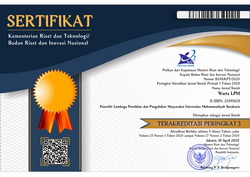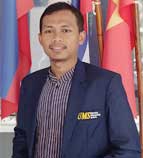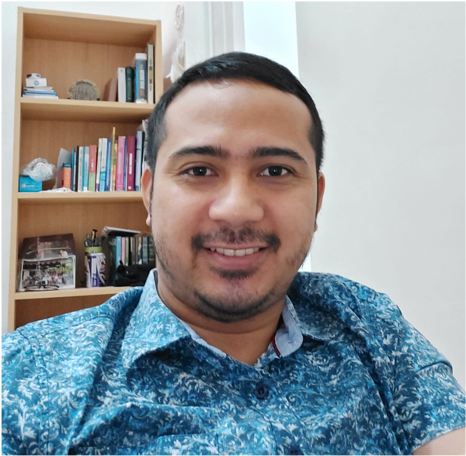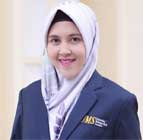Peningkatan Kemandirian Activity of Daily Living Siswa Disabilitas Fisik berbasis Aplikasi Dikta Care dan Alat Teknologi Bantu
DOI:
https://doi.org/10.23917/warta.v26i4.2658Keywords:
ADL, aplikasi, Dikta care, Disabilitas fisik, Inovasi alat makanAbstract
Mitra SDLB YPAC Surabaya stated that there are still many students with physical disabilities who cannot perform self-care such as wearing their own clothes, eating, drinking, bathing, toileting, decorating and mobilizing. A total of 4 students were partially assisted and 12 students were fully assisted in performing activities of daily living (ADL). Partners do not yet have materials for self-care. This is due to the unavailability of effective learning media that supports the improvement of ADL independently at SDLB YPAC Surabaya. This is due to the unavailability of effective learning media that supports the improvement of ADL independently at SDLB YPAC Surabaya. In addition, there are no special assistive devices that can support the self-care of children with disabilities independently. The purpose of this service is to increase the independence of students with disabilities in doing ADL. The implementation method consists of 4 stages, namely the preparation stage, implementation stage, monitoring and evaluation stage, and program sustainability. This service program has achieved results that teachers' knowledge about self-care for children with disabilities increased with a good category of 14 (87.5%), a medium category of 2 (12.55), and a low category of 0 (0%). Based on the evaluation of the level of independence, there is a change in the level of independence. The assessment before the action of the partially assisted category was 4 students, but after being given the innovation tool increased to 6 students, and students who were fully assisted initially were 12 reduced to 10 students. Even so, the full level of independence has not yet been achieved. So that it takes a long time to train students with disabilities by using late-made cutlery innovations.
References
Brandt, Å., Hansen, E. M., & Christensen, J. R. (2020). The effects of assistive technology service delivery processes and factors associated with positive outcomes – a systematic review. Disability and Rehabilitation: Assistive Technology, 15(5), 590–603. https://doi.org/10.1080/17483107.2019.1682067
Campado, R. J., Toquero, C. M. D., & Ulanday, D. M. (2023). Integration of assistive technology in teaching learners with special educational needs and disabilities in the Philippines. International Journal of Professional Development, Learners and Learning, 5(1), ep2308. https://doi.org/10.30935/ijpdll/13062
Carlon, S. L., Taylor, N. F., Dodd, K. J., & Shields, N. (2013). Differences in habitual physical activity levels of young people with cerebral palsy and their typically developing peers: a systematic review. Disability and Rehabilitation, 35(8), 647–655. https://doi.org/10.3109/09638288.2012.715721
Istiyanti, E., Sarjiyah, & Widiyantono, D. (2023). Pemberdayaan Kelompok Difabel “Argodadi Pinilih” Berbasis Usaha Tani Jamur. Warta LPM, 336–344. https://doi.org/10.23917/warta.v26i3.1862
Karagianni, E., & Drigas, A. (2023). Using New Technologies and Mobiles for Students with Disabilities to Build a Sustainable Inclusive Learning and Development Ecosystem. International Journal of Interactive Mobile Technologies, 17(1), 57–73. https://doi.org/10.3991/ijim.v17i01.36359
Kementerian Kesehatan. (2010). Pedoman Pelayanan Kesehatan Anak di Sekolah Luar Biasa (SLB) Bagi Petugas Kesehatan. Bakti Husada.
King, G., Lawm, M., King, S., Rosenbaum, P., Kertoy, M. K., & Young, N. L. (2003). A Conceptual Model of the Factors Affecting the Recreation and Leisure Participation of Children with Disabilities. Physical & Occupational Therapy In Pediatrics, 23(1), 63–90. https://doi.org/10.1080/J006v23n01_05
Maisikeli, S. G. (2023). Level of assistive technology use and awareness among people with physical disability in the United Arab Emirates. Technology and Disability, 35(1), 11–20. https://doi.org/10.3233/TAD-220393
Murphy, N. A., & Carbone, P. S. (2008). Promoting the Participation of Children With Disabilities in Sports, Recreation, and Physical Activities. Pediatrics, 121(5), 1057–1061. https://doi.org/10.1542/peds.2008-0566
Neter, J. E., Schokker, D. F., de Jong, E., Renders, C. M., Seidell, J. C., & Visscher, T. L. S. (2011). The Prevalence of Overweight and Obesity and Its Determinants in Children with and without Disabilities. The Journal of Pediatrics, 158(5), 735–739. https://doi.org/10.1016/j.jpeds.2010.10.039
Nuri, R. P., Ghahari, S., Aldersey, H. M., & Huque, A. S. (2020). Exploring access to government-led support for children with disabilities in Bangladesh. PLOS ONE, 15(7), e0235439. https://doi.org/10.1371/journal.pone.0235439
Prawitasari, N. R. N., Wijiastuti, A., & Budiyanto, B. (2023). Assistive Technology in Improving Daily Living Activities of Children with Intellectual Disabilities (pp. 466–474). https://doi.org/10.2991/978-2-38476-008-4_52
Tangcharoensathien, V., Witthayapipopsakul, W., Viriyathorn, S., & Patcharanarumol, W. (2018). Improving access to assistive technologies: challenges and solutions in low- and middle-income countries. WHO South-East Asia Journal of Public Health, 7(2), 84. https://doi.org/10.4103/2224-3151.239419
TNP2K, & Australian Government. (2020). Disability Situation Analysis Challenges and Barriers for People with Disability in Indonesia EXECUTIVE SUMMARY. https://www.worldbank.org/en/topic/disability
Unggul, S., Prakasa, W., Rohmayani, V., Hakim, D. L., & Setiyawan, R. (2023). Pengembangan Produk Inovasi BIMA Tuktuk bagi Mahasiswa Disabilitas di UMSurabaya Development of BIMA Tuktuk Innovation Products for Students with Disabilities at UMSurabaya. Jurnal Pengabdian Kepada Masyarakat, 7(1), 217–223. https://doi.org/10.30651/aks.v7i1.15374
UNICEF. (2023). Key issues for children with disabilities in Indonesia. www.unicef.org/indonesia/reports/key-is-
WHO. (2018). Improving access to assistive technology report by the director-general seventy-first world health assembly. World Health Organization.
WHO. (2023). Improving health services for people with disability. Https://Www.Who.Int/Westernpacific/Activities/Improving-Health-Services-for-People-with-Disability.
Wilson, P. E., & Clayton, G. H. (2010). Sports and Disability. PM&R, 2(3), S46–S54. https://doi.org/10.1016/j.pmrj.2010.02.002
Downloads
Submitted
Accepted
Published
How to Cite
Issue
Section
License
Copyright (c) 2023 Warta LPM

This work is licensed under a Creative Commons Attribution 4.0 International License.















